
My undergraduate Asian Art class would have been more aptly named “Inspired Daydreaming.” Sitting in the dark, listening to the comforting click of the old-school slide carousel projector, my imagination ran wild imagining the exotic locations that inspired paintings, sculptures and ancient architecture. I was particularly seduced by Cambodia’s mighty temples, a playground for impish monkeys, partially swallowed by greedy jungle greenery, which skyrocketed Siem Reap to the top of my travel bucket list.
A Short Stint Of Temple Tourism
Despite being groggy from jet lag, I hire a driver for sunrise at Angkor Wat for my first full day in Cambodia. Before going, I imagined sitting peacefully as the sun stretched pastel-colored fingers across the sky, slowly illuminating the largest religious monument in the world.
This naïve romantic notion evaporates as hordes of Chinese tourists in matching neon hats following flag-waving tour guides push me out of their way to flash peace signs for photographs. Disappointed — but still hopeful — I follow my driver to some of the lesser-known temples, hoping to find redemption in the serene smiles at Ankor Thom and the oozing roots of the tomb-raider temple at Ta Prohm.
Experiencing these awe-inspiring sites squeezed between sweaty people in fanny packs isn’t exactly what I had in mind. Sensing my disillusionment, my eager-to-please driver offers to take me to the countryside.
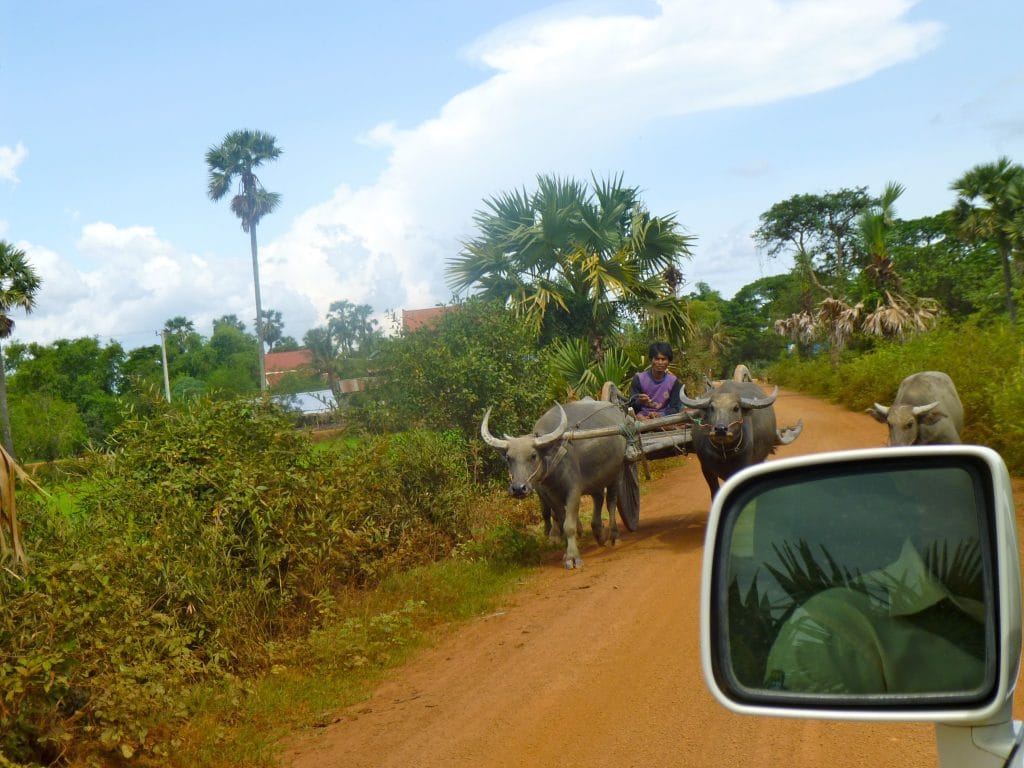
Farmers heading into town. Photo courtesy of Debra Perrone.
Cambodian Countryside
And off we went, bumping along dirt roads, past jarringly-green rice paddies, swaying palm trees, piles of produce preciously balanced on ox-carts and the occasional rogue cow. Nose pressed to the glass and grinning ear-to-ear for tourist-free countryside, I jokingly reprimand my driver, “This is the Cambodia I wanted to see! Why didn’t you take me here first?”
He smiles and responds, “Just wait,” as we pull up to a boat launch. I don’t remember hearing anything about a river cruise, but I pile into a colorful canoe-like boat, sputtering exhaust fumes. Then, we starting cruising — and I use that term lightly as we became stuck quite often — through lily pads to Tonle Sap Lake, the largest freshwater source in Southeast Asia.
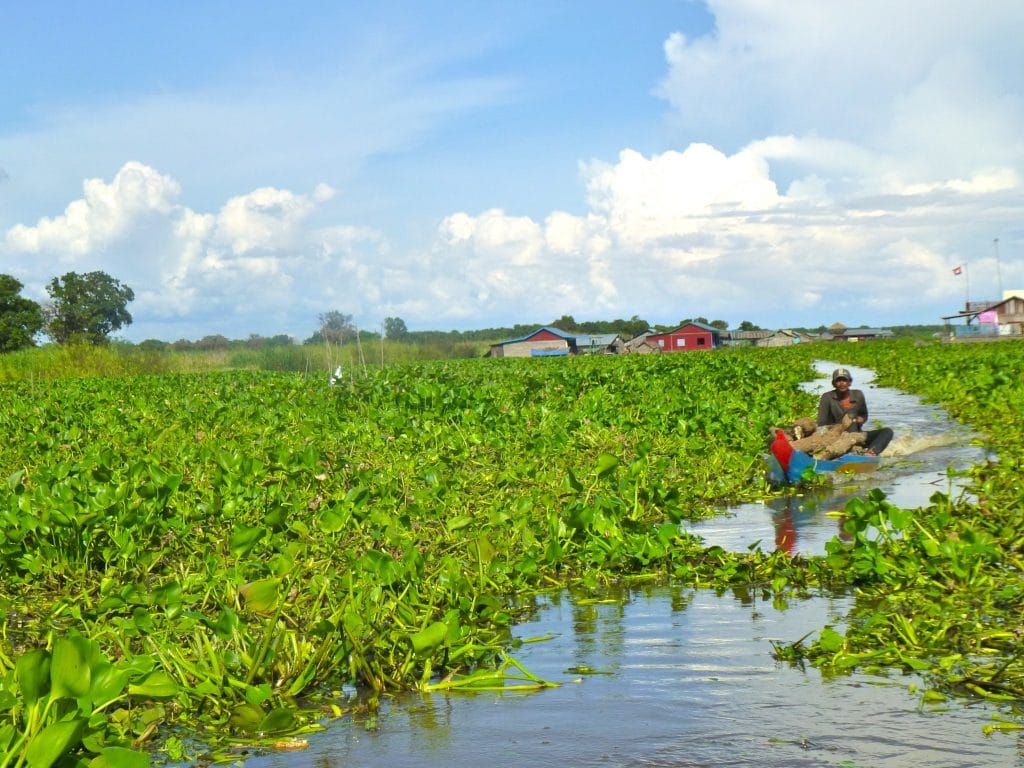
No tourists as far as the eye can see on Tonle Sap Lake. Photo courtesy of Katie Foote.
Floating Community
As the waterway opens up, an entire village grows out of the green. The dimensions of the lake change dramatically with the seasons, flourishing fivefold during monsoon season and covering 1/5 of the country, according to NPR. The massive flood waters change direction between seasons, bringing nutrients into the water as a “buffet” for the thriving fish and bird populations that earned the area UNESCO designation as an ecological hotspot. According to UNESCO, the area is home to over a million human inhabitants, 400 species of fish, 200 varieties of plants and 300 species of water birds.
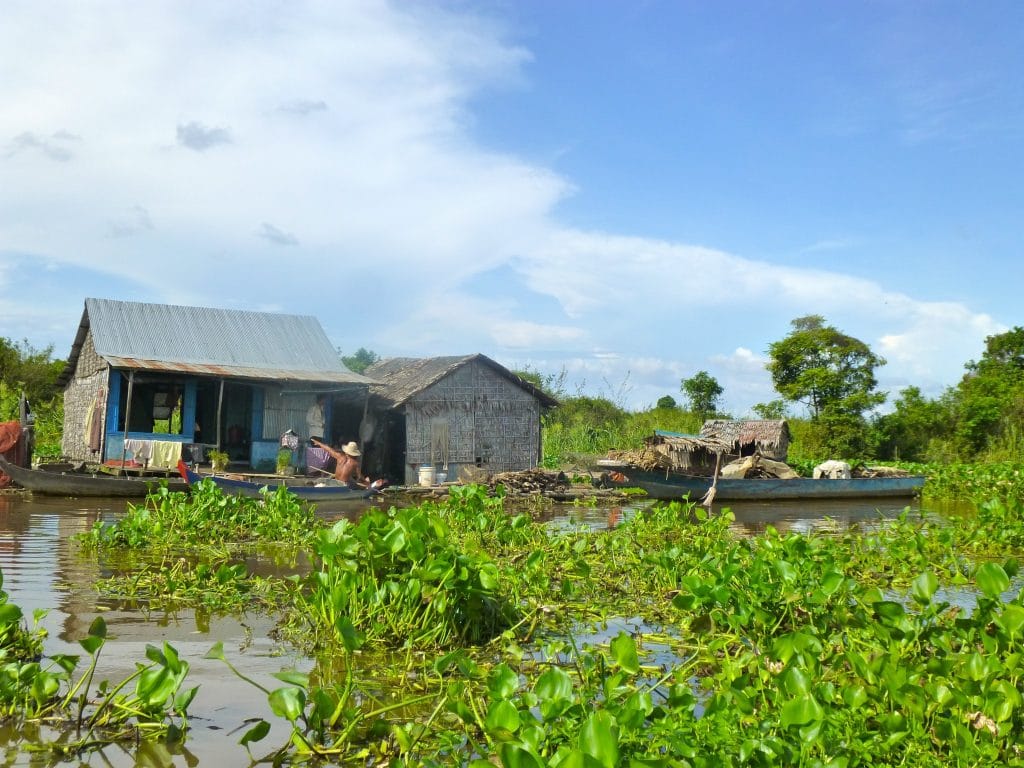
Instead of fighting the dramatically expanding and shrinking dimensions of the water’s edge, the villagers built everything on bamboo so it rises and falls with the water level. We pass floating schools, floating gas stations, floating karaoke bars and even floating farms. All homes are open-air, revealing groups of women weaving fish nets, people napping on hammocks, and kids “playing in their backyards,” jumping off front porches for a refreshing dip. People live in harmony with the landscape, the economy and way of life deeply intertwined with the lake’s ecosystem, with fishing serving as the major source of income in the area.
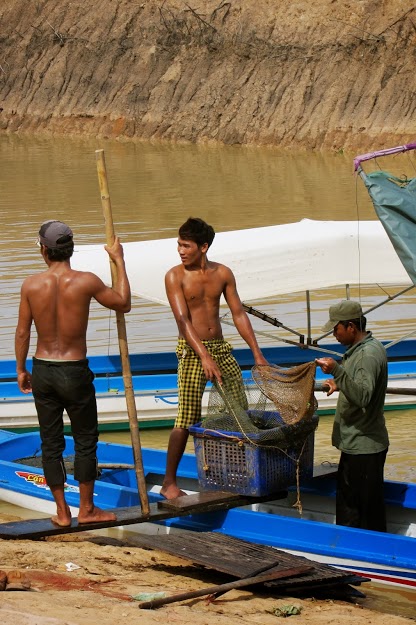
World Lakes estimates Tonle Sap provides over 75% of Cambodia’s fish production. Photo courtesy of Debra Perrone.
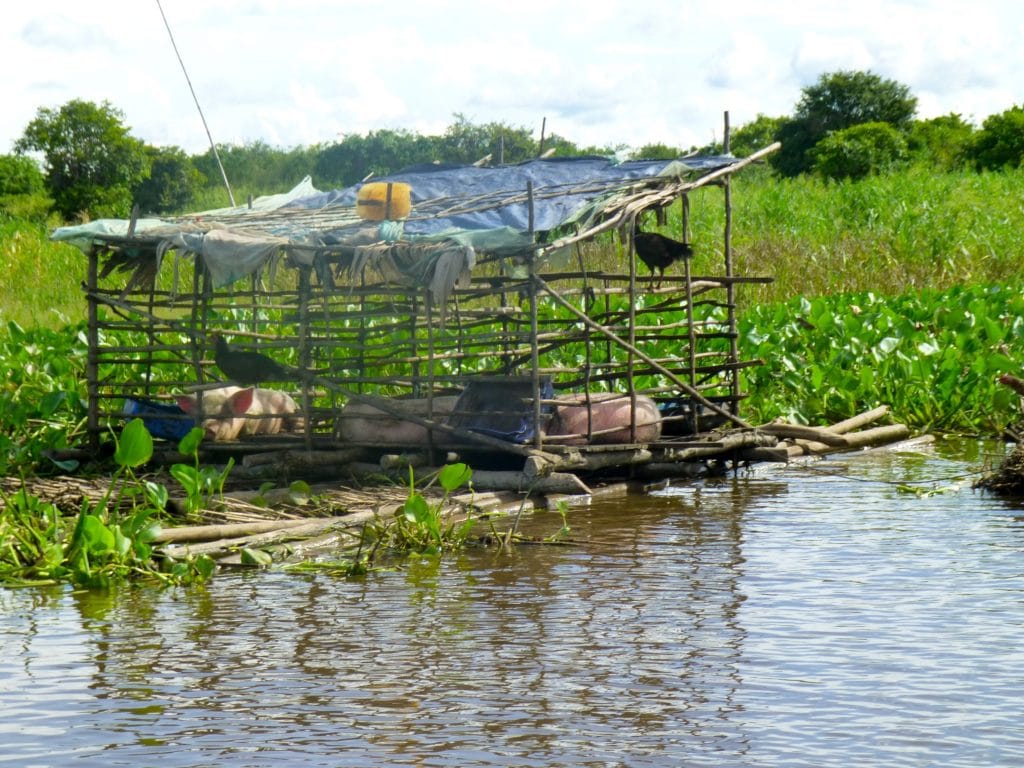
Floating pigs! Photo courtesy of Katie Foote.
At one point, we stop by a floating alligator farm to meet their toothy creatures, submerged in the shadows of algae-covered pens. The family who owns the farm greets me with warm smiles, pointing out potentially interesting objects in an animated fashion. I follow the “mother” of the household to look at maps of the area, when a young boy takes my hand and drags me over to a table to pet his puppies.
I hang out with the Cambodian family as long as the boat driver allows. While the family doesn’t speak English, smiling, laughing and playing is a universal language.
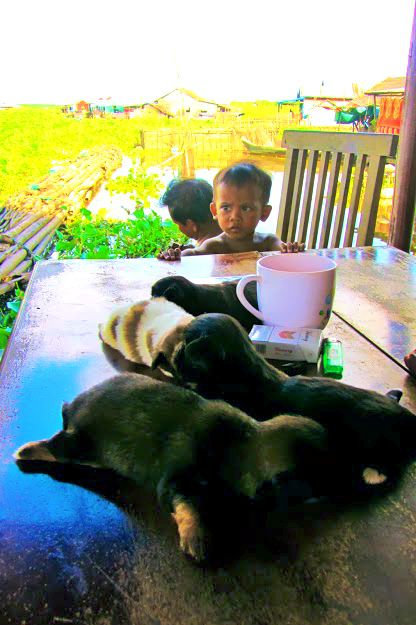
My buddy at the floating crocodile farm. Photo courtesy of Debra Perrone.
I came to Cambodia expecting the temples to take my breath away, but the warmth of the people is what stole my heart. Only 10 kilometers (6 miles) from Ankor Wat, Tonle Sap Lake is an ecological and cultural gem, too often overshadowed by the temples. A proverb reads, “a well-beaten path does not always make the right road.” I encourage you — wherever you are and wherever you go — to embrace opportunities to get off the main road. It might end up being the highlight of your trip.
Contributed by guest author: Katie Foote.
Top photo: Angkor Wat. Photo courtesy of MikeBehnken.

Jessica Festa is the editor of the travel sites Jessie on a Journey (http://jessieonajourney.com) and Epicure & Culture (http://epicureandculture.com). Along with blogging at We Blog The World, her byline has appeared in publications like Huffington Post, Gadling, Fodor’s, Travel + Escape, Matador, Viator, The Culture-Ist and many others. After getting her BA/MA in Communication from the State University of New York at Albany, she realized she wasn’t really to stop backpacking and made travel her full time job. Some of her most memorable experiences include studying abroad in Sydney, teaching English in Thailand, doing orphanage work in Ghana, hiking her way through South America and traveling solo through Europe. She has a passion for backpacking, adventure, hiking, wine and getting off the beaten path.








